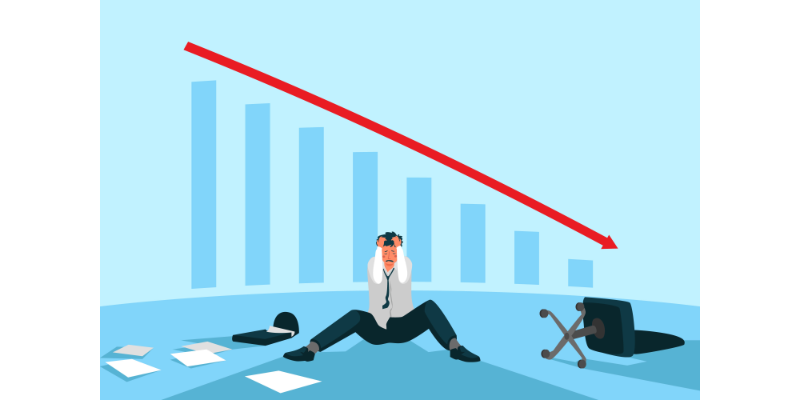Recessions don’t just come out of nowhere. They’re the result of specific shifts and decisions, sometimes slow-moving, sometimes sudden, that throw the economy off balance. Understanding what causes a recession can help make sense of the bigger picture when the news starts sounding grim. It also gives you a better shot at preparing for what might come next.
Let’s look at the most common triggers, how they connect, and what history has shown us about how recessions tend to unfold.
The Basics of the Economic Cycle
Every economy moves in cycles. Sometimes it grows, sometimes it slows. That natural rhythm includes phases of expansion, where things feel good, jobs are plentiful, spending is up, and businesses are confident. Then there’s contraction, where growth starts to dip, jobs are lost, and spending cools off.
Recessions happen during the contraction phase. They’re a deeper and more sustained version of a normal slowdown. Not every dip in the economy turns into a recession, but when the signs line up, shrinking GDP, rising unemployment, and falling production, it’s a clear signal that the economy is under real stress.
So, When Does a Slowdown Cross the Line?
The official call usually comes when GDP falls for two quarters in a row. That’s the simplest measure, but economists also look at unemployment, wages, consumer spending, and business output. When enough of those take a serious hit, it’s no longer just a slow patch—it becomes a recession.
What Actually Causes a Recession?
There’s no single answer. Recessions usually result from a mix of problems that feed into each other. Here’s what tends to lead the way:
1. Demand Shock
This is what happens when people and businesses suddenly stop spending.
When consumers lose confidence or income, they hold back. They might save more, delay big purchases, or cut non-essentials. Sometimes this comes from fear, like during a pandemic or a major layoff wave. Other times, it’s triggered by inflation or uncertainty about the future.
Businesses react, too. If leaders expect weaker demand, they pause investments, delay hiring, or cancel expansion plans. That creates a feedback loop—less spending leads to fewer jobs, which leads to even less spending.
2. Supply Shock
Sometimes the issue starts with how things are made and delivered. Natural disasters, wars, and global events can disrupt supply chains, making goods harder to get or more expensive.
When production costs spike, like during an oil shock, businesses either pass those costs onto customers or absorb them. Either way, margins get squeezed, and overall activity slows.
3. Monetary Policy Mistakes
Central banks try to steer the economy using interest rates. But it’s a tricky balance.
When rates go up too quickly, borrowing becomes expensive. Mortgages, business loans, and credit all tighten, which can choke off growth. On the flip side, if policy changes too fast or isn’t communicated, it can spook markets and trigger confusion or panic.
4. Inflation or Deflation
Both extremes can cause problems.
When inflation rises too fast, everything gets more expensive. Wages often don’t keep up, and people start pulling back on spending. That slows the economy.
Deflation brings its own set of risks. When prices fall steadily, people delay purchases, hoping for better deals later. This can lead to a freeze in spending and make debt harder to pay off.
5. Financial Crises
These are usually triggered by problems in the banking system or financial markets.
If banks collapse or credit dries up, the flow of money stops. That affects everyone from homeowners to small business owners to large corporations. Sometimes, the trouble comes from inflated asset bubbles, like housing in 2008 or tech stocks in the early 2000s. When those pop, the fallout spreads fast.
6. Fiscal Policy Missteps
Governments play a huge role in economic stability. When they tighten budgets too quickly during a fragile recovery or impose too many regulations too fast, it can hurt business and consumer confidence.
High public debt can also limit the government’s ability to respond with stimulus spending or other support measures when a recession hits.
7. Global Events and Geopolitical Shocks
The world is connected. What happens in one part can affect everyone else.
COVID-19 is the most obvious recent example. Supply chains collapsed, travel stopped, and entire industries paused. Wars, trade disputes, or political instability can also trigger wide-reaching economic effects, especially in today’s global economy.
It’s Rarely Just One Thing
Most recessions don’t come from a single cause. It’s more like dominoes. One thing triggers another, which triggers another. A financial crisis might reduce lending, which slows business investment, which increases layoffs, which reduces spending, and so on.
That’s why recessions are so hard to predict and even harder to stop once they begin.
Real-World Examples
In 2008, a housing bubble burst in the United States and set off a global credit crisis. Banks failed, jobs disappeared, and it took years to recover.
In 2020, a global health crisis froze economies almost overnight. Travel, retail, and hospitality industries were hit especially hard, and governments had to act quickly to prevent a deeper collapse.
Each event had different starting points, but both show how fast things can unravel when the conditions line up.
Recessions aren’t random. They’re the result of pressure points in the economy, some visible, some not, that build over time and eventually break. Understanding these causes doesn’t prevent the next one, but it does help you see the warning signs and respond with more clarity.
You don’t need to track every policy shift or market movement. But knowing how these pieces fit together gives you a better sense of what’s happening when the economy starts to wobble. And that knowledge makes a real difference in how you plan, act, and stay grounded when uncertainty hits.
